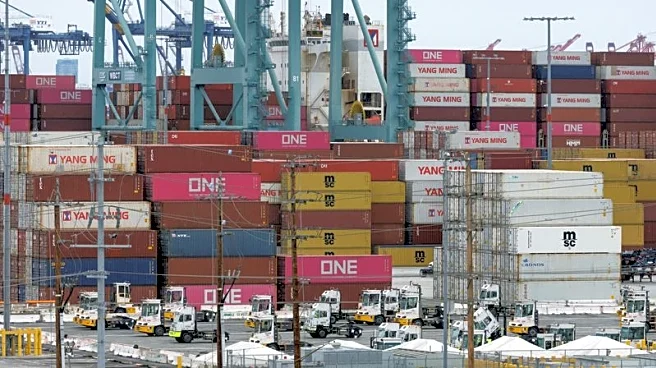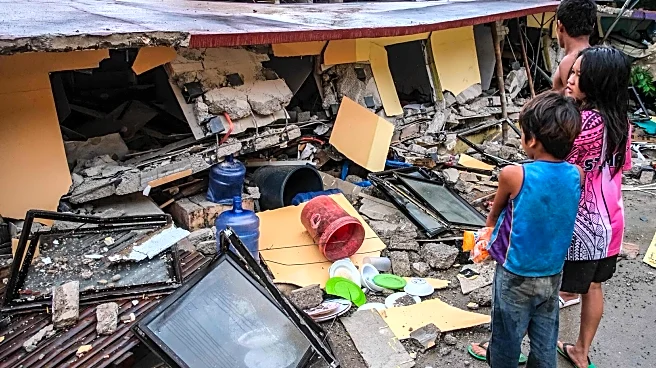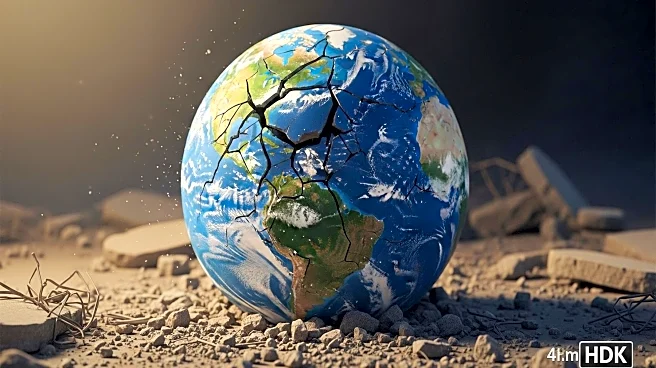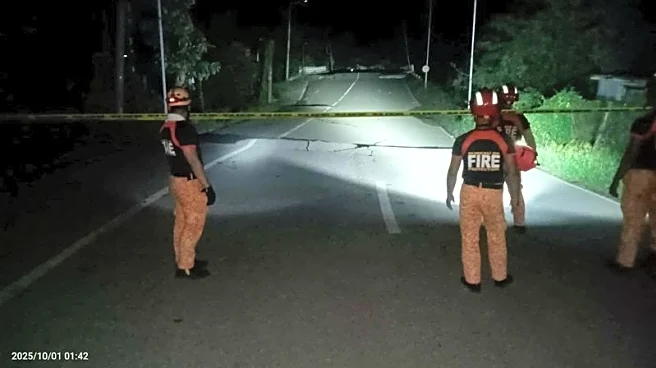What's Happening?
A powerful earthquake struck the central Philippines, specifically in Cebu province, resulting in at least 69 fatalities. The magnitude-6.9 earthquake occurred at around 10 p.m. on Tuesday, with its epicenter located approximately 19 kilometers northeast of Bogo City. The quake caused significant damage, trapping residents in collapsed structures and leading to a frantic search and rescue operation. Rescuers are utilizing backhoes and sniffer dogs to locate survivors amidst the debris. The Philippine government is assessing the situation to determine if international assistance is required. The United States, Japan, Australia, and the European Union have expressed condolences and readiness to support the Philippines.
Why It's Important?
The earthquake's impact on Cebu province highlights the vulnerability of the Philippines to natural disasters, given its location on the Pacific 'Ring of Fire.' The disaster has disrupted daily life, with schools and government offices closed as safety checks are conducted. The event underscores the need for robust disaster preparedness and response strategies in the region. The international community's willingness to assist reflects the global solidarity in times of crisis, potentially leading to strengthened diplomatic relations and collaborative efforts in disaster management.
What's Next?
The Philippine government is conducting a rapid damage assessment to decide on seeking foreign aid. Meanwhile, rescue operations continue as officials aim to save lives during the critical 'golden hour' following the disaster. The region is also dealing with the aftermath of a recent tropical storm, complicating recovery efforts. The Philippine Institute of Volcanology and Seismology is monitoring aftershocks, which have exceeded 600 since the initial quake, posing further risks to the affected areas.
Beyond the Headlines
The earthquake has compounded the trauma experienced by residents who were recently affected by a tropical storm. This sequence of events may lead to long-term psychological impacts on the local population. Additionally, the disaster highlights the importance of infrastructure resilience in earthquake-prone areas, prompting potential policy shifts towards improved building standards and emergency response systems.












